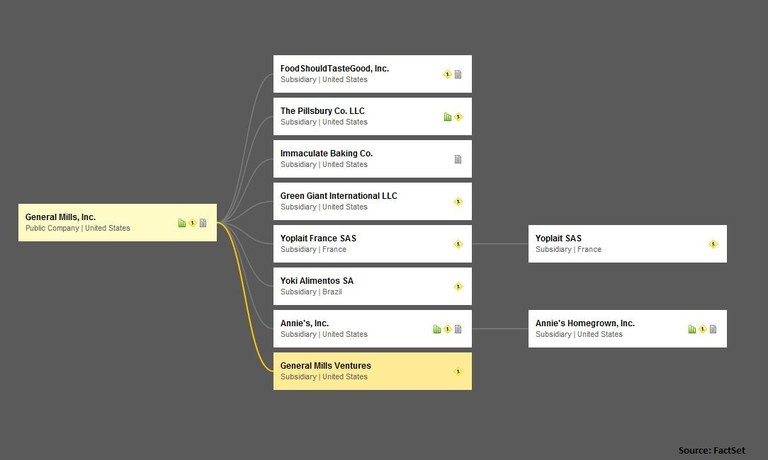In March, three million DiGiorno Pizza, Lean Cuisine, and Stouffer's frozen dinners were recalled because the spinach they contained was potentially contaminated with glass fragments. What do all of these brands have in common? They're all owned by parent company, Nestlé.
And while in this instance Nestlé was not met with dipping sales, stocks, or reputation as the result of the recall, it's not hard to imagine a scenario in which such an incident could cause a shift in the way investors and consumers perceive a company. In fact, you probably already know of at least one example. A health scare at food chain Chipotle prompted the company's EPS estimates for FY 2016 to drop by 14.1% late last year, and the burrito chain has continued to have difficulty recovering.
On the other hand, imagine a prominent celebrity tweets that their favorite brand of cereal is Cinnamon Toast Crunch. As the Internet starts to translate that mention into a myriad of memes, hashtags, in-jokes, and videos, the downstream effects of the brand's resurgent cultural relevance might have a positive impact on financials or stock prices.
Product news both positive and negative can make a big difference in the perceptions surrounding a company, though exactly how may not always be obvious. Large organizations are often a tangled network of companies, business units, subsidiaries, brands, and more, and their relationships with each other may not always be clear. As a result, investors must understand and untangle linkages to determine the real cost of public sentiment on a company.
To do that, we can look at tradenames, the collection of terms that most completely and succinctly describe how and why a company's product and service offering maps to a sector, in this case using FactSet's Revere hierarchy. In doing so we can see how the organization is structured, as we look at the tradename layers like company names, business units, divisions, subsidiaries, product categories, brands, or products names. Using the Revere Tradenames database, we can see, for example, that GE Healthcare is a division of General Electric Co (the company) and Buick is a brand owned by GM.
Depending on how large and how many layers of different tradenames one entity may have, the level of risk associated with a single brand or subsidiary will vary dramatically. For example, a recall or contamination scare could impact the entire organization or barely register on another brand's radar.
If we go back to our celebrity tweet example, using tradenames, we can connect Cinnamon Toast Crunch not only to the Bread and Cereal Products category (along with other products that occupy the same niche), but also to parent company General Mills, which has roughly 90 other tradenames attached to it.

With that information in hand, we can quickly rule out any association Cinnamon Toast Crunch and General Mills have with a recall involving another cereal producer, or see what other business units the company owns and how they were acquired. Going one step farther we can use FactSet and Revere to apply quantitative analysis on the company's attractiveness contingent on how viral the Twitter conversation goes.

Tradenames can do more than expose performance indicators; they can also expose the potential viability of mergers between companies. For example, we could examine tradenames to identify brands and product overlaps between two companies involved in a potential merger. The viability of the deal might hinge on a set of complementary brands, rather than two rosters that occupy roughly the same product space, creating a clearer picture of the merits of a potential deal.
